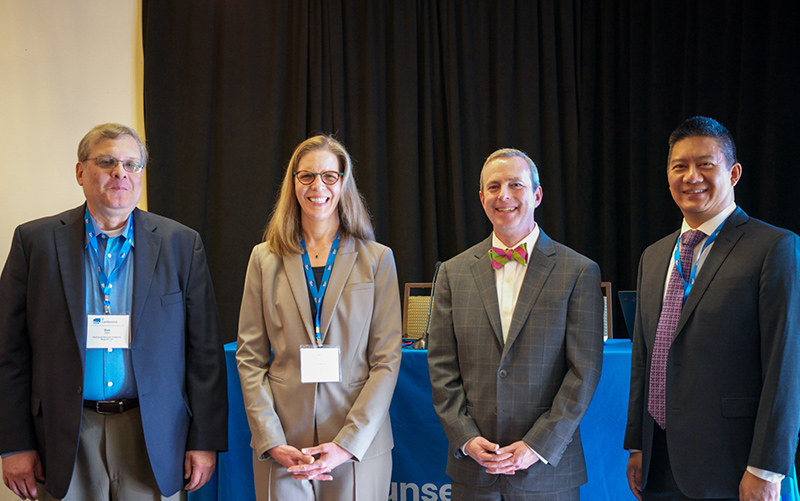At 30-years old, the 340B program is buckling under its own weight and overdue for reform. With legal action, including a Supreme Court ruling, 2022 was an eventful year for 340B, but will 2023 be the year the program finally evolves or perishes?
The 340B program was designed to allow hospitals, clinics, and their associated pharmacies, in underserved communities to provide patients with prescription drugs at deep discounts. Born in November of 1992, it was intended to cover “safety net hospitals.” According to the Health Resources and Services Administration (HRSA), “Manufacturers participating in Medicaid agree to provide outpatient drugs to covered entities at significantly reduced prices.”
While the program started small, its growth in later years has become a problem. It now allows well-funded hospitals to reap large profits on the sale of drugs without offering patients any discounts. Drug makers have taken issue with the fact that patients, in most cases, are not benefitting from the program, while loose regulations result in them providing statutorily prohibited duplicate discounts. Now the HRSA has plans to modify the process for drug makers and hospitals to resolve their disputes over discounts through the Administrative Dispute Resolution (ADR) process. While these new proposed regulations add positive changes such as a reconsideration process and a means to bar disputes that are subject to litigation, manufacturers are concerned that the proposed rule makes it too easy for covered entities to bring disputes to the ADR process and needlessly modifies a defined process using the Federal Civil Rules of Procedure into one that is obscure with no sense of how decisions will be made. Comments on the ADR process are being accepted until Jan. 30 through the Federal Register.
Concerns about misuse of 340B grew after 2010, which was a watershed year for the 340B Program. The Affordable Care Act, in a case of unintended consequences, expanded the program “to include children’s hospitals, outpatient cancer center hospitals, and many kinds of rural hospitals with high Medicare patient populations.” As Becker’s Hospital Review points out, “The criteria for what qualifies as a rural hospital is murky, because if a facility is not in a rural area, a hospital can still be tagged as one if it meets other requirements, including having at least 275 beds.”
Further, HRSA issued a new guidance expanding contract pharmacy. Previously, contract pharmacies had been limited to covered entities that had no on-site pharmacies, and they were limited to one contract pharmacy. The “updated” 2010 guidance eliminated the one-pharmacy limitation, and permitted all covered entities, regardless of whether they maintained an on-site pharmacy, to enter into unlimited numbers of contract pharmacy arrangements.

While purchases under the program amounted to $4 billion per year in 2007-2009, by “calendar year 2021, 340B covered entities purchased $43.9 billion in covered outpatient drugs under the 340B Program,” according to HRSA.
Ultimately, as the Commonwealth Fund explains, the program has grown from “8,100 provider sites (including both hospitals and pharmacies) in 2000 to 50,000 by 2020,” becoming the second-largest federal drug prescription program after Medicare Part D. And drug manufacturers have been absorbing much of the program’s cost.
The problem is compounded by the fact that there is limited oversight of the program, poor transparency in how covered entities use funds generated by the program, and murkiness when it comes to the validity of contract pharmacies and hospitals that are jumping on board, critics say.
Growing where it is not supposed to grow
In a study published in HealthAffairs, researchers find that hospitals under the 340B program were expanding into the more affluent neighborhoods—antithetical to the program’s intent.
As early as 2004, the study finds, hospital-affiliated clinics that registered for the 340B program served communities that were wealthier and had higher rates of health insurance. This is compared to communities served by hospitals and clinics that registered for the program before 2004.
As the study explains, “340B hospitals can generate profits by prescribing drugs to patients who have private insurance or Medicare.” More egregiously, “340B hospitals are not required to pass along their discounts to patients or insurers or to demonstrate their investments in outpatient programs for the poor.” This is despite the fact that “other participating medical providers are required to pass along the discounts to patients and to provide annual reports about their service to vulnerable populations to the HRSA.”
In essence, hospitals are taking advantage of a system meant to help patients.
A study conducted by IQVIA finds that only 1.4% of 340B-eligible claims show that discounts were actually given to patients. That small group of patients saw “out-of-pocket costs were reduced by 92.9%, with a mean reduction in patient out-of-pocket costs for 30 days of therapy of $661.65,” which is what the program was meant to do, the study says. But apparently patients were not being helped in the overwhelming majority of cases. While “340B discount sharing at the point of sale at contract pharmacies is possible… most 340B-eligible patients at contract pharmacies are not directly benefiting from 340B discounts,” the study says.
Legal and regulatory actions
Drug makers have recently been unequivocal in their pushback against the program. In addition to hospitals pocketing the savings of drug discounts intended for patients, there is a second issue of duplicate discounts for drugs prescribed to Medicaid patients.
As a white paper by USC Schaeffer explains, “the challenges associated with accurate tracking and reporting of 340B discounts means that in some cases, a manufacturer will sell drugs to a covered entity at the 340B price and later pay a Medicaid rebate on the same drug.”
While this should not hypothetically happen “identifying and preventing [duplicate discounts] can be difficult due to lax record keeping and poor coordination between covered entities and state Medicaid agencies,” writes USC.
Further, the US General Accountability Office has demonstrated contract pharmacies are a significant source of diversion and duplicate discounts due in large part to the fact that they don’t identify 340B-eligible patients until well after the prescription has been dispensed. In fact the GAO noted in a report studying contract pharmacies that “66 percent of the 380 diversion findings in HRSA audits involved drugs distributed at contract pharmacies. . .” Diversion, also prohibited by statute, can often lead to duplicate discounts.
So it is not surprising that drug makers are pushing back. A number of drug manufacturers have limited their involvement in the 340B program and are fighting the battle in court.
AbbVie, Amgen, AstraZeneca, Bausch Health, Boehringer Ingelheim, Biogen, Bristol Myers Squibb, Eli Lilly, Exelixis, Gilead, GlaxoSmithKline, Johnson & Johnson, Merck, Novartis, Novo Nordisk, Pfizer, Sanofi, UCB and United Therapeutics, have all limited distribution to some degree to contract pharmacies in the program. Companies like Merck, Eli Lilly and AstraZeneca and more have even taken legal action in response to letters from the Department of Health and Human Services threatening civil monetary penalties if the company continued to fail “to provide the 340B price to covered entities using contract pharmacies.”
But hospitals have been taking action as well and the 340B program has even made an appearance in the Supreme Court.
The case centers on a 2017 ruling by the Centers for Medicare and Medicaid Services (CMS) that stated Medicare would reimburse certain drugs purchased through the 340B program at lower rates to reflect the discounted prices. In response, three hospitals as well as the American Hospital Association, the Association of American Medical Colleges, and America’s Essential Hospitals challenged the CMS rule as inconsistent with the language in the Medicare statute. While a 2020 court of appeals decision upheld the authority of the Department of Health and Human Services, the Supreme Court ultimately reversed that decision and ruled unanimously in favor of the plaintiffs on June 15, 2022.
Suffice to say that the 340B program had a big year in 2022. Yet, little is expected to change this year as parties on all sides of the issue try to contend with the behemoth program. One thing is for certain: If the program does not ultimately serve at-risk and underserved patient populations, then it has outlived its usefulness.




